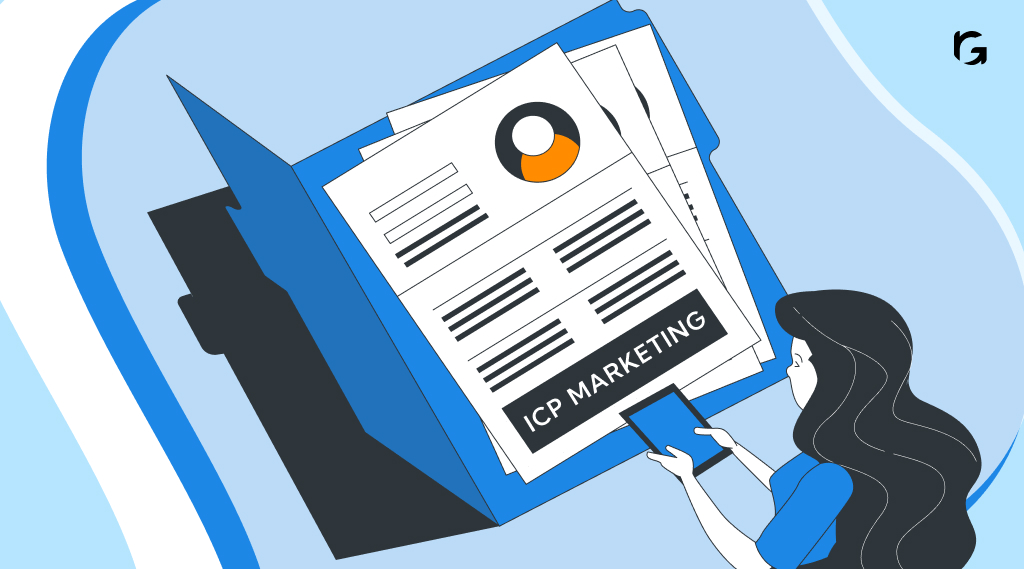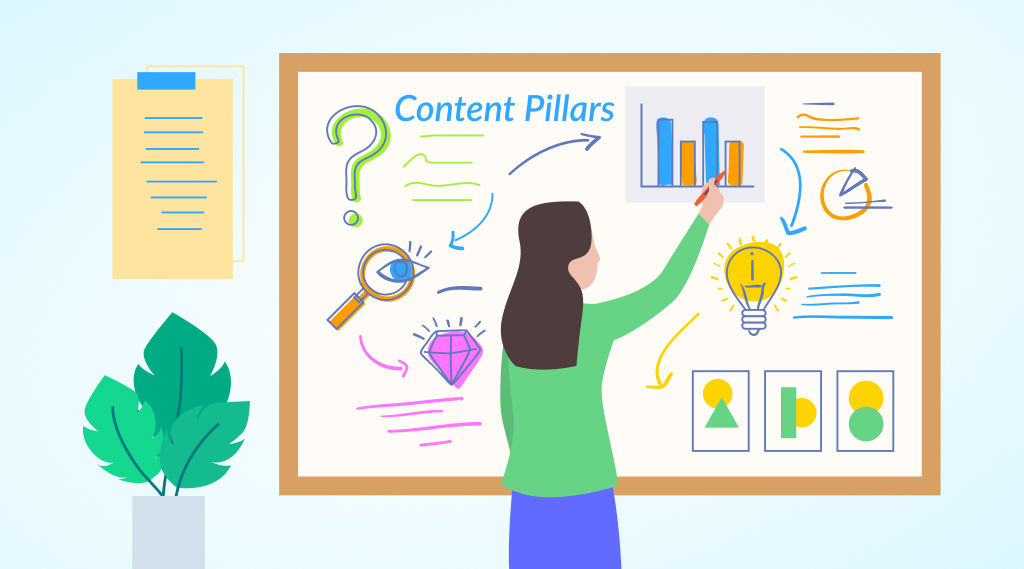Introduction
Global marketing initiatives that aim to please everyone are no longer effective.
Rather, the focus is on identifying the people who have the highest likelihood of becoming your clients. Ideal Customer Profile (ICP) marketing can help in this situation. It’s a calculated strategy that has the power to completely change how you find and interact with high-potential prospects who are actively looking for your goods or services.
We will delve into ICP marketing in this blog, explaining the idea, its enormous importance, and how it can be your go-to tactic for producing leads who have a strong intent to buy.
What does ICP mean?
At its core, ICP stands for Ideal Customer Profile. It’s like creating a blueprint of your perfect customer – someone who not only needs your product or service but is also ready and willing to make a purchase. Think of it as a detailed sketch that outlines the characteristics and traits of your dream customer.
The beauty of ICP marketing is that it helps you narrow down your focus. Instead of casting a wide net and hoping to catch a few fish, you’re using a spear to target the big catch. By knowing precisely who your ideal customer is, you can tailor your marketing efforts to attract and engage with them effectively.
ICP means creating a detailed portrait of your ideal customer to guide your marketing efforts and, most importantly, find those high-intent leads who are genuinely interested in what you offer.
Why is ICP important in marketing?
Now that we understand what ICP is, let’s delve into the critical question of why it holds such importance in the field of marketing.
1. Focused targeting: In the vast sea of potential customers, identifying your ideal customer profile allows you to focus your marketing efforts. This means that you’re not wasting resources trying to reach everyone. Instead, you’re honing in on the individuals or businesses that are most likely to buy from you. This laser-like precision can lead to higher conversion rates and a more efficient allocation of your marketing budget.
2. Tailored messaging: When you know exactly who your ideal customers are, you can craft marketing messages that resonate with them. Your content, advertisements, and promotions can be tailored to address the specific needs, pain points, and desires of your target audience. This personalization makes your marketing more compelling and engaging.
3. Higher ROI: ICP marketing can significantly improve your return on investment (ROI). Since you’re targeting high-potential leads, your marketing efforts are more likely to result in actual sales. This means you’re getting more value from every dollar you invest in marketing.
4. Improved customer retention: Not only does ICP help you find new customers, but it can also enhance customer retention. When you attract customers who genuinely match your ideal profile, they are more likely to be satisfied with your products or services. Happy customers are more likely to stay loyal and continue doing business with you.
5. Better understanding of customers: Developing your ICP requires in-depth research and analysis. This process allows you to gain a deep understanding of your target audience. You’ll uncover valuable insights about what motivates them, what problems they need solving, and how they make purchasing decisions. This knowledge can inform all aspects of your marketing strategy.
6. Competitive advantage: ICP marketing gives you a competitive edge. When you’re effectively targeting high-intent leads, you can outperform competitors who are still using generic marketing approaches. Your ability to provide tailored solutions to your ideal customers sets you apart in the market.
How do I create an ICP for my business?
Creating an Ideal Customer Profile (ICP) for your B2B marketing strategy is a crucial step in optimizing your marketing efforts. Here’s a step-by-step guide to help you create an effective ICP:
1. Analyze your existing customers
Begin by looking at your current customer base. Identify the clients who have been the most profitable, satisfied, and engaged with your products or services. These are often your best indicators of an ideal customer.
2. Segment your customer data
Segment your existing customer data to uncover common traits. Look at factors such as industry, company size, location, job titles of decision-makers, and common challenges they face. These shared characteristics can form the basis of your ICP.
3. Conduct market research
Use external market research and industry reports to identify trends and challenges within your target market. This data can help you refine and validate the characteristics of your ideal customer.
4. Survey your current customers
Consider conducting surveys or interviews with your existing customers to gain insights into their needs, pain points, and motivations. These conversations can provide invaluable data for your ICP.
5. Refine your ICP characteristics
Based on the information gathered, create a comprehensive list of characteristics that define your ideal B2B customer. Include factors such as industry, company size, location, challenges, and goals. Be as specific as possible.
6. Prioritize ICP characteristics
Not all characteristics are equal. Prioritize the attributes that have the most significant impact on your business. For example, if you’ve found that the industry is the most critical factor, make it a primary characteristic in your ICP.
7. Create buyer personas (Optional)
If it aligns with your strategy, you can create buyer personas within your ICP. These represent the key decision-makers within the businesses that fit your ICP. Define their roles, responsibilities, and pain points.
8. Validate your ICP
Test your ICP by applying it to your existing customer base and leads. Determine how well your ICP aligns with these groups and adjust it as needed.
9. Implement ICP-Driven marketing
Once your ICP is established, tailor your marketing strategies to align with it. Craft content, advertising, and messaging that directly address the characteristics and needs of your ideal B2B customers.
10. Measure and adapt
Continuously monitor the performance of your ICP-driven marketing efforts. Use analytics and feedback to fine-tune your strategy. Be open to modifying your ICP as market dynamics change.
Remember that creating an ICP is not a one-time task; it’s an ongoing process. Market conditions and customer needs evolve, so regularly revisiting and updating your ICP ensures that your B2B marketing remains effective and efficient. An ICP is a dynamic tool that helps you stay aligned with your ideal customers and generate high buying intent leads consistently.
7 ICP marketing strategies to try in 2024
As the marketing landscape evolves, it’s essential to adapt your Ideal Customer Profile (ICP) strategies to stay ahead. Here are seven ICP marketing strategies to consider in 2024:
1. AI-Powered predictive analytics:
Leverage artificial intelligence (AI) to analyze data and predict which businesses are most likely to become high-intent leads. AI can quickly process vast amounts of information to identify patterns and behaviors that align with your ICP.
2. Personalized content at scale:
With advanced marketing automation tools, you can create highly personalized content for each business that matches your ICP. Tailor your emails, website content, and recommendations to address the unique needs and challenges of each target organization.
3. Account-based marketing (ABM):
ABM is a highly focused strategy that tailors marketing efforts to specific target accounts. It’s an ideal approach when your ICP consists of a select number of high-value businesses. ABM allows for a hyper-personalized marketing approach.
4. Multi-Channel marketing:
Diversify your marketing channels to reach your ideal customers where they are. Combine content marketing, social media, email marketing, and even offline channels to create a comprehensive and consistent brand presence.
5. Content alignment with ICP:
Ensure that your content strategy is entirely aligned with your ICP. Create content that directly addresses the pain points, challenges, and goals of your ideal customer profile. This resonates more effectively with them and drives higher engagement.
6. Social listening and monitoring:
Use social listening tools to monitor conversations in your industry and among your target businesses. This real-time data can help you identify high-intent leads who are discussing topics related to your offerings.
7. Continuous data analysis:
Regularly review and update your ICP based on real-time data and market changes. Be agile in adjusting your strategies to stay in line with the evolving needs of your ideal customers.
These ICP marketing strategies are designed to help you not only identify high buying intent leads but also engage with them in a personalized and effective manner. In 2024, staying at the forefront of marketing technology and trends is crucial for maintaining a competitive edge in your industry.
Conclusion
ICP is a strategy that changes with your clients; its success depends on your ability to provide steady value and remain aware of their ever-shifting needs. ICP marketing will continue to be a vital strategy for companies hoping to prosper in the digital era in 2024 and beyond.
Ready to elevate your marketing game? Get started with ICP marketing and transform leads into loyal customers today. Get in touch with our experts today.



